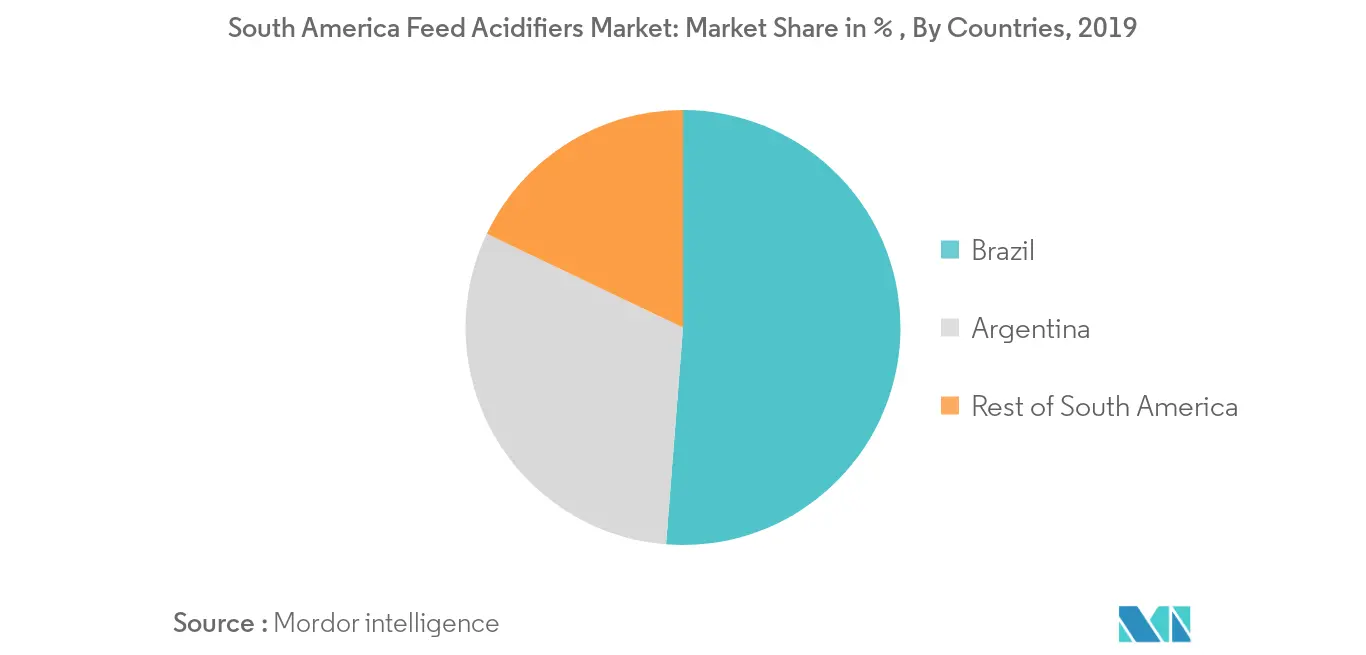Market Trends of South America Feed Acidifiers Industry
This section covers the major market trends shaping the South America Feed Acidifiers Market according to our research experts:
Increasing Animal Production Drives the Market
Livestock is of key importance for South America and is a basic source of food for the food security of local populations. There fore increasing demand for meat domestically and globally caused an escalation in animal production boosting the feed acidifiers market. Brazil is the leading animal producer in the region, followed by Argentina. Chicken, beef, and pork are the main meats consumed in the country. Hence, the production of these animals outnumbered the other animals, and acidifiers are mainly used in these animals' diets.

Brazil Dominates the Market
As Brazil is the leading producer, consumer, and exporter of animals in the region, it accounts for the major share of the market. The total number of swine, cattle, and poultry produced in the country was 41.4 million, 213 million, and 1468 million, respectively in 2018. Increasing consumption of meat, export demand and government support are some of the major reasons for large animal production in Brazil. the feed acidifiers consumption is anticipated to increase in the coming years as animal production is accelerating in the country.


